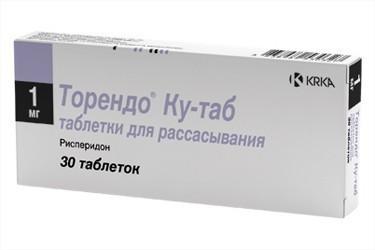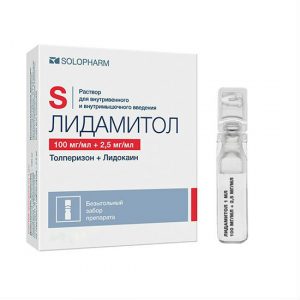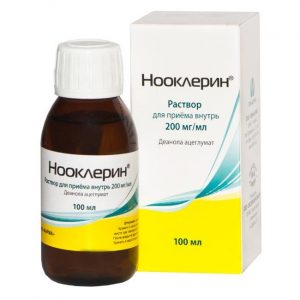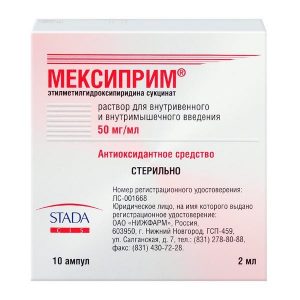Description
Latin name
Torendo Q-Tab
Packing
30 pcs
Pharmacological action
Torvacard – a lipid-lowering drug. A selective competitive inhibitor of HMG-CoA reductase, the main enzyme that converts 3-hydroxy-3-methylglutaryl-coenzyme A to mevalonic acid, is a precursor to steroids, including cholesterol. In the liver, triglycerides and cholesterol are included in VLDL, enter the blood plasma and are transported to peripheral tissues. From VLDL, LDL is formed, which is catabolized by interaction with high-affinity LDL receptors.
Sedative effect is due to blockade of adrenoreceptors of the reticular formation of the brain stem antiemetic – blockade of the dopamine receptors of the trigger zone of the vomiting center hypothermic effect – blockade of the dopamine receptors of the hypothalamus.
Reduces productive symptoms (delirium, hallucinations), automatism. It causes less suppression of motor activity and to a lesser extent induces catalepsy than classical antipsychotics (antipsychotics).
Balanced central antagonism of serotonin and dopamine may reduce the risk of extrapyramidal symptoms.
Risperidone may cause a dose-dependent increase in plasma prolactin concentrations.
Pharmacokinetics
When taken orally, risperidone is completely absorbed (regardless of food intake) and plasma Cmax levels are observed after 1 2 hours.
Risperidone is metabolized by cytochrome P450 2D6 to form 9-hydroxy risperidone, which has a similar pharmacological effect .
Risperidone and 9-hydroxy-risperidone are an effective antipsychotic fraction. Further risperidone metabolism is N-dealkylation. When ingested, risperidone is excreted with T1 / 2 for about 3 hours.
It has been found that T1 / 2 of 9-hydroxy-risperidone and the active antipsychotic fraction is 24 hours.
In most patients, an equilibrium concentration of risperidone is observed one day after the start of treatment. The equilibrium state of 9-hydroxy-risperidone in most cases is achieved 3-4 days after the start of treatment.
The concentration of risperidone in plasma is proportional to the dose of the drug (within therapeutic doses).
Risperidone is rapidly distributed in the body. The volume of distribution is 1 2 l / kg. In plasma, risperidone is bound to albumin and acidic alpha1-glycoprotein. The risperidone fraction, which is bound by the plasma protein, is 88% and, in the case of 9-hydroxy risperidone, 77%.
It is excreted by the kidneys – 70% (of which 35 45% in the form of a pharmacologically active fraction) and 14% – with bile. With a single dose, there are high levels of active plasma concentrations and slow elimination in elderly patients and patients with insufficient renal function.
Indications
Acute and chronic schizophrenia and other psychotic conditions with productive and / or negative symptoms.
– Affective disorders in various mental illnesses.
– Behavioral disorders in patients with dementia with symptoms of aggressiveness (outbursts of anger, physical abuse), with mental disorders (agitation, delirium) or psychotic symptoms.
– As an adjunct therapy in the treatment of mania in bipolar disorders.
– As an adjunct therapy for behavioral disorders in adolescents from 15 years of age and adult patients with reduced intellectual level or mental retardation, in cases where destructive behavior (aggressiveness, impulsivity, autoaggression) is the leading one in the clinical picture of the disease.
Contraindications
Lactation.
– Children and adolescents under 15 years of age (efficacy and safety not established).
– Hypersensitivity to the drug.
With caution, the drug should be used for diseases of the cardiovascular system (chronic heart failure, myocardial infarction, cardiac conduction disturbances), dehydration and hypovolemia, cerebrovascular accident, Parkinson’s disease, seizures (including history), renal or severe liver failure, drug abuse or drug dependence, conditions predisposing to the development of tachycardia such as pirouette (bradycardia, disorders e electrolyte balance, concomitant use of drugs that prolong the QT interval), brain tumors, intestinal obstruction, cases of acute drug overdose, Reye syndrome (the antiemetic effect of risperidone may mask the symptoms of these conditions).
Pregnancy and lactation
The safety of risperidone during pregnancy has not been studied. The use of the drug during pregnancy is possible only if the intended benefit to the mother outweighs the potential risk to the fetus. Since risperidone and 9-hydroxy-risperidone are excreted in breast milk, if you need to use the drug during lactation, you should decide whether to stop breastfeeding.
Composition
1 tablet contains: active substance: mannitol butyl methacrylate copolymer basic povidone MCC hyprolose (low-substituted hydroxypropyl cellulose LH-21) aspartame crospovidone iron dye red oxide (E172) flavorings mint and menthol calcium magnesium silicate
Side effects of
From the side of the central nervous system and peripheral nervous system: insomnia, agitation, anxiety, headache sometimes – drowsiness, increased fatigue, dizziness, impaired concentration, blurred vision rarely – extrapyramidal symptoms (tremor, stiffness, hypersalivation, brachyzedia, acute dystonia), mania or hypomania, stroke (in elderly patients with predisposing factors), as well as hypervolemia (due to polydipsia or syndrome of inadequate secretion of antidiuretic go rmona), tardive dyskinesia (involuntary rhythmic movements of mainly the tongue and / or face), neuroleptic malignant syndrome (hyperthermia, muscle rigidity, instability of autonomous functions, impaired consciousness and increased levels of CPK), violations of thermoregulation and epileptic seizures.
From the digestive system: constipation, dyspepsia, nausea or vomiting, abdominal pain, increased activity of liver transaminases, dry mouth, hyposalivation or hypersalivation, anorexia and / or increased appetite, increased or decreased body weight.
From the cardiovascular system: sometimes – Orthostatic hypotension, reflex tachycardia, increased blood pressure.
From the endocrine system: galactorrhea, gynecomastia, menstrual irregularities, amenorrhea, weight gain, hyperglycemia, exacerbation of preexisting diabetes mellitus.
From the reproductive system: priapism, impaired erection, impaired ejaculation, anorgasmia.
From the hemopoietic system: neutropenia, thrombocytopenia.
Dermatological reactions: dry skin, hyperpigmentation, itching, seborrhea.
Allergic reactions: rhinitis, rash, angioedema, photosensitivity.
Other: arthralgia, urinary incontinence.
Overdose
Symptoms: drowsiness, sedation, conscious depression, tachycardia, arterial hypotension, extrapyramidal disorders, in rare cases QT prolongation.
Treatment: It is necessary to ensure the free passage of the respiratory tract to ensure adequate oxygenation and ventilation, gastric lavage (after intubation if the patient is unconscious) and the appointment of activated charcoal in combination with laxatives. Symptomatic therapy aimed at maintaining vital functions of the body. To timely diagnose possible heart rhythm disorders, ECG monitoring should be started as soon as possible. Careful medical monitoring and ECG monitoring are carried out until the symptoms of intoxication disappear. There is no specific antidote.
Storage conditions
The drug should be stored out of the reach of children at a temperature not exceeding 30 ° C.
The Expiration of
is 3 years.
Active ingredient
risperidone
Dosage form
dosage form
tablets dl resorption
KRKA d.d. Novo mesto AO, Slovenia




